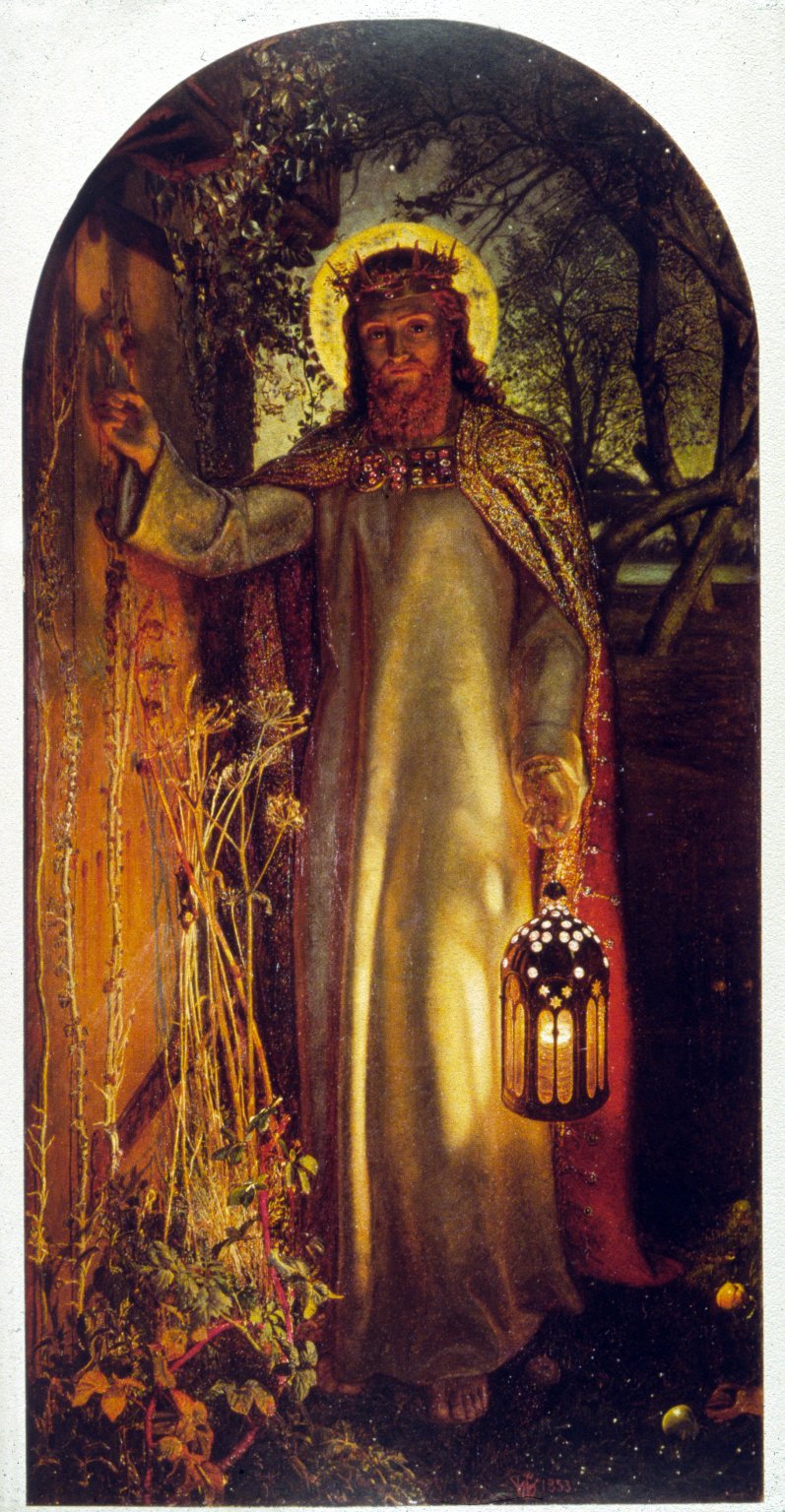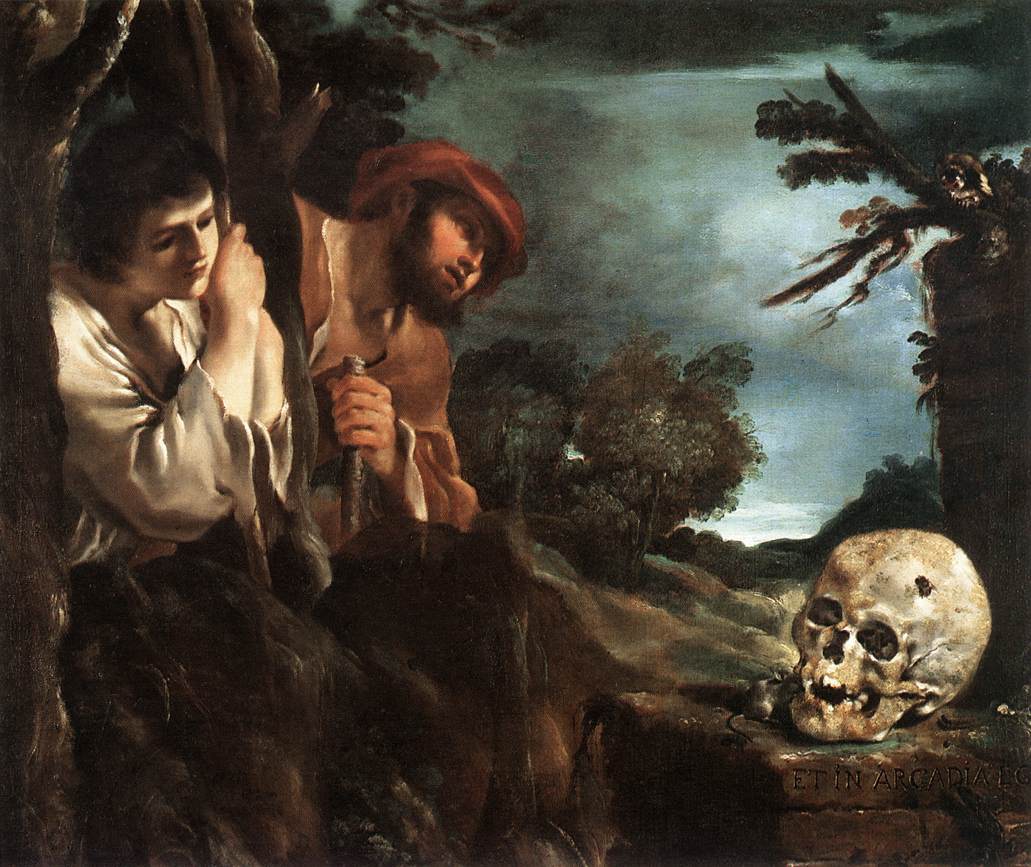 Acts 2:14, 36-41
Acts 2:14, 36-41
Psalm 23:1-6
1 Peter 2:20-25
John 10:1-10
 Acts 2:14, 36-41
Acts 2:14, 36-41
Psalm 23:1-6
1 Peter 2:20-25
John 10:1-10
I wonder how many people who have passed through death's door find the material circumstances around their departure to be .... remarkable? On the world's side, these can be horrific, never-to-be-forgotten, even cataclysmic such as the annihilation of the World Trade Center towers. But I doubt that these things make a lasting impression on those who have died. For what is death to them? For that matter, what is death to the Lord of Life?
To take one example, the principal characters of C.S. Lewis' Chronicles of Narnia die in a horrifying and graphic train wreck — a scene never to be erased from the English imagination, we might say, yet to them .... it was an unremarkable door that opened into Narnia. Professor Digory Kirke remembers only that he suddenly felt "unstiffened." For those of you who find talk of Narnia disproportionate to our subject, I will share that I have been through something like a train wreck which could scarcely have been more violent though on a smaller scale. And while it horrified bystanders to the point of making them sick, my soul and my feelings experienced no horror though I was perfectly aware of what had happened to me.
The major point here is that the "door of death" is also, simultaneously and inseparably, the "door of life." Now, which, I ask you, is the truly memorable side of that door? The side facing the world, which is death? Or the side facing friendship with God, which is life? Entering suddenly into a brilliant garden, happening and blooming all around you, you do not remember, nor care, which garden gate you stumbled through. I wonder how many people in Heaven can even recall how, or under what circumstances, they died.
On the other hand, those who are living an eternal death, who did not choose to open the Door of Life when they could have, are likely to remember the moment of their death forever. For that is the moment they lost the world of life forever .... unless, of course, the traditional blessing of forgetfulness-in-Hell is granted.
As we consider yesterday's feast day, on which we commemorated St. John being immersed into a boiling cauldron of oil, that is the point: death is of no account to those who are bound for Life. That the oil had no effect upon St. John is to suggest the irrelevance of the event. This morning's Gospel lesson, widens these points for all of us.
The entire passage centers on sheep, on a sheepfold, and on the One Shepherd. To the Jewish imagination, sheep are the symbol of slaughter par excellence, for on the Night of the Passover, it was the blood of a lamb that marked one for life as the Plague of Death swept over Egypt. Indeed, Jesus is "the Lamb that was slain," is the "Passover of God." The sheepfold, which is a small enclosure to gathering pastured sheep into tight quarters, inevitably suggests a herd that is about to be harvested. Who the gatekeeper might be, as the Lord tells us, is of enormous importance. Without question, the gate before is a life-or-death matter. To those bound for life, this gate is of no consequence; for those bound for eternal death, it suddenly is the most important subject in the world, the subject, literally, of a lifetime. The master question being asked is, Do you hear His voice? He makes this point more sharply as He conflates the gate with a door and then the door to Himself: "I am the Door," He says.
We might ask ourselves the important follow-on question, "Where is this Door in the space of my own life?" These are deep and personal questions. And I cannot sort through them more trenchantly than has William Holman Hunt in the his painting, "The Light of the World," which explores these mysteries with exceptional clarity. This painting has long had special meaning for our Community. Sr. Maryann carried it with her (in the form of a holy card) wherever her vocation led: through China, India, and Haiti. A copy hung in my own study for years. And its original continues to grace an Anglo-Catholic shrine at Keble College, Oxford. Let us now enter the painting.
The Lord stands alone in a garden at night and knocks at a door. His hands are wounded, and upon His sacred Head rests a crown of thorns. He is .... the Risen Christ, the Good Shepherd, the Lamb of God, the Master of the Sheepfold. But tonight it is His regal bearing that dominates and fills us with awe: His golden crown is set with rubies. His costly gold-brocade cloak is encrusted with diamonds, emeralds, and sapphires. The divine lantern He bears mysteriously interacts with the stars in the firmament above. Surrounding Him is a circle of light .... or is it the moon bowing down casting its soft, golden radiance around Him? His royal mien causes us to stand back in silence; He is not to be approached. Unaccountably, He stands barefoot amongst rotting fruit strewn upon the ground, and His right arm brushes against old and dried weeds as He reaches toward a stone door in order to knock. And He knocks.
But, wait! Isn't He the door? Then what is this other door upon which He is knocking? The painting's title will help us to go deeper into the mystery: The Light of the World. Our text this morning is the tenth chapter of St. John's Gospel, but we are prepared for it a few chapters earlier in the Prologue:
|
In him was life; and the life was the light of men.
And the light shineth in darkness; and the darkness comprehended it not. He ... was the true Light, which lighteth every man that cometh into the world. |
 Upon closer inspection, we see that the Lord knocks on the slab door of a tomb
now overgrown and half hidden with weeds.
Painting in the nineteenth century,
Holman Hunt
is echoing another painting,
one painted in the seventeenth century by Guercino,
"Et in Arcadia Ego."
The English translation is,
"Even in Arcadia there Am I,"
and
here we have again this resonant phrase: "I Am," .... this time being spoken by Death.
Upon closer inspection, we see that the Lord knocks on the slab door of a tomb
now overgrown and half hidden with weeds.
Painting in the nineteenth century,
Holman Hunt
is echoing another painting,
one painted in the seventeenth century by Guercino,
"Et in Arcadia Ego."
The English translation is,
"Even in Arcadia there Am I,"
and
here we have again this resonant phrase: "I Am," .... this time being spoken by Death.
In the Guercino painting the shepherds are puzzled, for they have never seen a human skull. "What is it?" they think. They do not know enough even to ask, "What is death?" For Arcadia was the pagan version of Eden, the eternal spring of the pre-Christian world's Golden Age.
As death is the ultimate expression of personal corruption and sin, we are presented with the most important question of this morning's meditation: shall the garden continue to be one of purity and innocence? Or is it to become a place of corruption? It is a remarkable fact that every child born into the world, lighted from within by the Lord of Life, is given a holy privilege, and that is relive the Eden story in the dimension and scale of his or her own life. Each of us is free to choose purity .... forever. Any of us might never enter into the life of grave sin. "Impossible!" you say. Oh no, it is not impossible. I have met such people. Moreover, we all are familiar with the "Little Way" of St. Therese of Lisieux — a way to Heaven that is no more nor less than choosing purity and goodness each day of our lives. Indeed, this simple girl of no theological accomplishment has become a Doctor of the Church .... on the basis of purity and goodness.
For the rest of us, whose inner lives do not look like hers, there is another hope. For tonight the Light of the World stands in our ruined garden. He humbles Himself to walk amongst the rotting fruit of our errors and misspent lives. His visage is filled with sadness as He recalls the once splendid state of this garden, and He remembers our innocent play and laughter. Look carefully at His face, which does not express hopefulness, for only we, in our sovereign freedom, have the power to open this door. There is no door pull or handle on the outside. Our tomb has been sealed as all death chambers must be. Only we who lie within may answer His knocking summons.
And He knocks.
He knocks with the light of life.
He knocks with the happy sound that we know for we heard it every day of our lives as children.
And we return to long forgotten places in our hearts.
And He knocks
rekindling our desire for purity and innocence,
shaking off deathly slumbers.
And our hearts become contrite as we are humbled by the ruin of our gardens
and ask His forgiveness,
which He always grants to a sincere heart.
And He speaks to us,
and
we follow.
For He is the Gate.
He is the Door.
He alone is the Good Shepherd.
In Him we shall lack for nothing.
And we will dwell in the His House,
and many gardens under His care,
forever.
In the Name of the Father and of the Son and of the Holy Ghost. Amen.